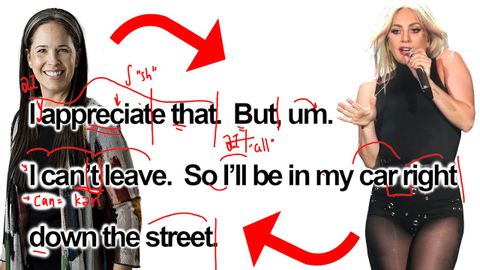Lady Gaga:星星的誕生|瑞秋英語 (Lady Gaga: Learn English with Movies | A Star is Born | Rachel’s English)
Summer 發佈於 2020 年 11 月 10 日  沒有此條件下的單字
沒有此條件下的單字US /prəˌnʌnsiˈeʃən/
・
UK /prəˌnʌnsiˈeɪʃn/
- n. (c./u.)發音;正確發音;發音方式;發音指南
- n.慣用語;樂句;用話表示;用短語描述;用語言表達:;片語
- v.t./i.措辭
US /ˈkɑnˌtɛkst/
・
UK /ˈkɒntekst/
- n. (c./u.)上下文 ; 背景 ; 來龍去脈;背景;環境;語境
